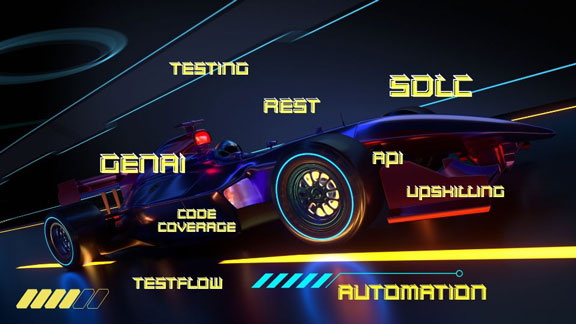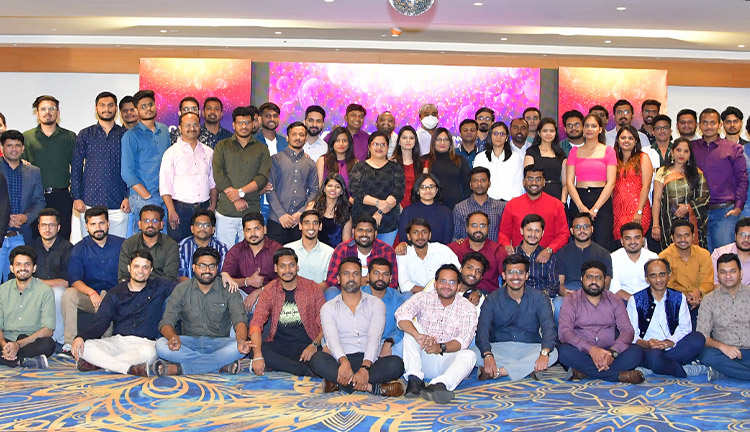Why do your DevOps teams need to “shift left”?

Posted By
Chaitanya Jawale

Testing has been an integral part of the software development process since the start. A more software-defined approach to product development has resulted in accelerated product development. To match this accelerated delivery speed with higher product quality an alternative approach to traditional testing was needed. This is where TestOps stepped in. Most organizations prefer automated and continuous testing for quick and continuous feedback to ensure bug-free products. This, in turn, reduces the complexities involved in development processes and accelerates software delivery. In other words, TestOps is a more evolved version of testing in which Development, Testing, and Ops teams collaborate to accelerate software delivery.
Earlier, Test teams used to enter the process at a much later stage, once the Dev teams were done with the development. But now, Test teams work closely with the Development and Ops teams and have their say at earlier stages of product development too. Shift left is an important practice in TestOps that has gained widespread popularity in recent times. If you are looking to increase the efficiency of your TestOps processes, then this blog might interest you. To begin, we will look at what could be some of the causes of software failure and then dive deeper into the shift left approach.
Causes Of Software Failure
The causes of failures may include inappropriate frameworks, inadequacies in algorithms, database-related issues, incorrect synchronization, erroneous resource estimations, queries demanding too much data, and issues with images and service calls, among others. If any of these shortcomings are observed in the earlier stages, it is obvious that problems will persist in the stages that follow due to the inter-dependencies. While most users blame developers for software failure and bugs, what they often forget is it could be one of these parameters going haywire instead.
What Is Shift Left All About?
A simple answer to this question is - shift left is all about reducing failures in the software development process. But how do we do that? I will try answering that question here. To begin with, DevOps expects continuous application delivery at lightning speeds, and shift left refers to prevention against bugs and failures at the earliest to meet these expectations. You must have heard the proverb, “Prevention is better than cure” and shifting left does exactly this! It tests your software and applications at every stage and gets rid of bugs and errors at much earlier stages i.e., before the errors become disasters. In layman’s terms, you synchronize testing at every stage of the DevOps lifecycle. Thus, with this approach, testing becomes an integral part of the whole development lifecycle.
Master vulnerability management in your DevOps pipeline.
But, Does It Affect The Speed Of Application Delivery?
What we are doing in shift left is - we are picking up testing that used to be a separate process and placing it before every process of the development lifecycle. So, Test teams will have their say in every phase of software development, right from requirement gathering to prototyping to the actual solution. Test teams will analyse the solution that you are proposing against the requirements gathered; they will check if the prototype is actually delivering what the end product is supposed to deliver; and once the actual solution is ready, they will test it comprehensively to make it reliable. Now you might be thinking that this will slow down the delivery speed. Trust me; it won’t! Look at it like this… before shifting left, testing used to be a lengthy process. Everything had to be tested serially. However, the shift left approach divides the testing process into smaller, phase-specific sub-processes. In other words, testing becomes central to every process in the DevOps lifecycle. This, in turn, enables continuous delivery at faster rates. The cover image will help you to understand the exact idea behind shift left.
The Key Ingredients
The main ingredients of shift left include the following:
- Testing: It is needless to say that continuous testing is a crucial part of the shift left approach. It primarily prevents bugs and failures, in turn avoiding redevelopment costs. It is crucial to check whether the test results match the expectations at every stage. The Dev and Ops teams then need to take measures accordingly to match or even exceed these expectations.
- Automation: Automation is the heart of DevOps. It brings with it a plethora of advantages for TestOps, including testing efficiency improvements, faster feedback, accelerated results, etc. Achieving maximum accuracy through minimal effort is the mantra of test automation. Sometimes, automating TestOps may result in high initial investments, but it will, for sure, save a lot of money in the long run. It does so by saving time and effort you need to invest in manually running tests and fixing bugs & errors.
- Security: Security, just like testing, has to be ensured at every stage of DevOps. Security or SecOps is an essential component for shift left to work in an ideal way. So, in other words, security needs to shift left along with testing to transform your DevOps into DevSecOps. After all, bugs, errors, and threats go hand in hand and so do testing, automation, and security.
So, Should We Simply Shift Everything Left?
The answer is - No! Although there are several tools that enable you to shift left with a few clicks, it isn’t always feasible, nor is it wise to simply shift everything left. Some metrics can only be tested with real-time traffic and API calls made while the software is live in the production environment. Hardening of runtime security defenses, A/B testing, and fault tolerance testing are examples of such metrics. The only thing that you need to keep in mind here is, testing shouldn’t cause a bottleneck in the development lifecycle if you are shifting to the right. You must carefully choose the metrics that you want to shift and then decide which way you want to shift them.
To start with, you can pick one matrix and start shifting. Afterward, you can pick the next matrix, then the next one, and so on. Follow this process, and you will soon realize how it accelerates software delivery and increases the reliability of your release. All the best!
Related Blogs




















